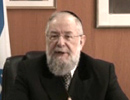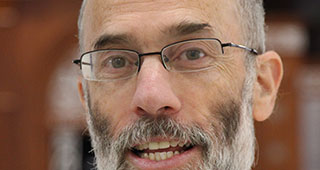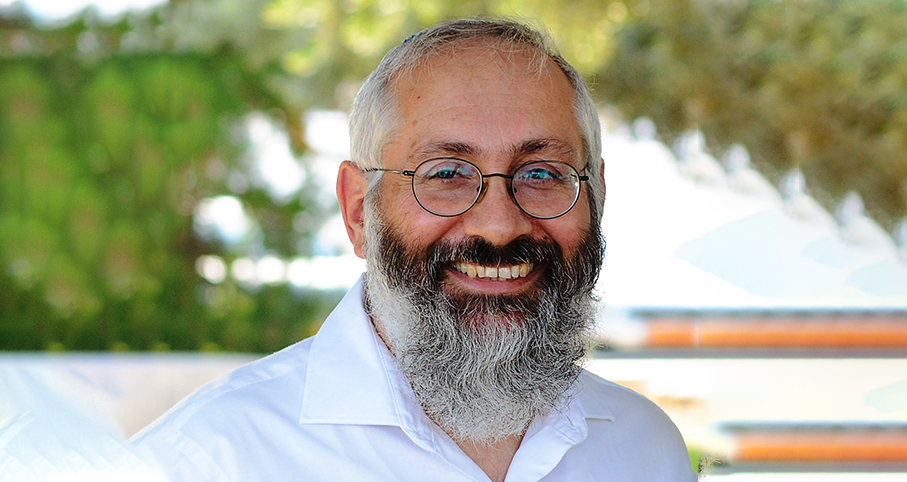Beit Midrash
- Sections
- Chemdat Yamim
- Parashat Hashavua
- Torah Portion and Tanach
- Bereshit
- Miketz
commemoration of Chanuka is whether the number of candles we light increases as the days of Chanuka progress (Beit Hillel) or decreases (Beit Shammai). Both give their reason. Beit Shammai model the commemoration, of rabbinic origin, after the Torah precedent on Sukkot: the bulls that are sacrificed on Sukkot decrease daily. Beit Hillel counter with an idea: we go up in sanctity, and we do not go down.
Each side has a strong case. It is perhaps not that the two sides argue if one, generally, starts strong or ends strong, but that they differ on the focus of the celebration of Chanuka. We begin with the Maharal’s explanation, starting with Beit Shammai: "The first is the beginning of everything; therefore it is on a higher level. It is as if within its strength is included that of the following days. That is why we light eight corresponding to the days that are approaching, and that is why the bulls of Sukkot decrease, because the first day of Sukkot is the highest." Beit Hillel’s logic is as follows: "... for sanctity is a lofty level, and one does not reach this lofty level right away. Rather, he reaches it level by level until the last one, for a person is elevated at the end to a greater sanctity. Therefore, a person who receives the miracle, in the beginning he is less and increases, and he becomes more at the end than at the beginning."
Let us take the Maharal’s thesis in another direction. We have holidays that follow Beit Shammai’s approach: i.e., Pesach and Sukkot, whose concentration of mitzvot is in the beginning (outside the Beit Hamkdash, the Torah subscribes taking lulav and etrog only on the first day.) But there is a set (according to classic rabbinic view) of holidays where the highlight is at the end, i.e., the Yamim Noraim of Rosh Hashana until Yom Kippur, ending with Ne’ila. The difference between these days is that Pesach and Sukkot are holidays where the focus is on what Hashem did for us. During the Yamim Noraim, the focus is on improving our level.
Beit Shammai saw Chanuka as following the Sukkot model, a holiday of thanking Hashem for the miracles He did for us. As the Maharal explained, the power of the entire miracle is there from the beginning. In fact, Hashem does not improve over time, as He has always been (and will always be) perfect. However, Beit Hillel puts the stress on us. The lighting of the candles in the Beit Hamikdash in impossible circumstances was our attempt to elevate ourselves, and Hashem showed us His satisfaction by enabling us to light them beyond natural capabilities. We commemorate Chanuka, in addition to thanking Hashem, by striving to elevate ourselves as our nation of yore did. With the focus on us, the Maharal says, the direction must be of increasing. We do not begin as perfect, and if we do not grow, it is a serious shortcoming.
Let us be inspired by Beit Hillel’s approach and increasingly use the opportunity that Chanuka provides to work on the amount of light we can shine from our homes and our beings, the home to our soul, to improve ourselves and those around us.

Wandering … Without the Ark
Rabbi Shaul Yisraeli zt"l | 5773

Years of Sheva and Sava
Rabbi Yossef Carmel | Kislev 25 5776

An Angel of a Man
Rabbi Yossef Carmel | Kislev 12 5779

Parashat Hashavua: From Paroh to Hamas and Iran – In Those Days at this Time
Rabbi Yossef Carmel | Kislev 5786

Rabbi Daniel Mann

Obtaining Arba’ah Minim for the Sukkot after Shemitta
Tisheri 7 5776

Bikur Cholim by Electronic Means
Shvat 1 5782

Pay for Overtime on Shabbat
5773























